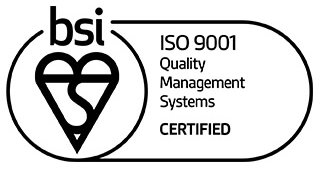Why 3D Rapid Prototyping Is the Future of Metal Casting
UK metal casting is renowned for its high-quality results, making it highly desirable in various industries. We maintain this prestige by continuously exploring ways to improve our processes and make them more effective for our clients; this is why we developed our popular 3D rapid prototyping service. Read on to discover why 3D rapid prototyping is integral to the highest quality results in metal casting.
Benefits of Rapid Prototyping for Designers
At Dean Group, we know component designers' challenges regarding sourcing efficient metal casting. That’s why we cater our prototyping services to offer a range of benefits that can help clients overcome these challenges and achieve their goals.
Testing and Validation: Reducing Costs and Time-to-Market
Clients can test and validate their designs before committing to full-scale production. Creating accurate and functional prototypes enables clients to identify and rectify any issues or improvements needed early in the design process.
This early testing stage is crucial as it helps to detect and resolve potential problems before they become costly and time-consuming during production. By catching mistakes early, our clients can save on manufacturing costs and reduce the overall time-to-market for their components.
Customisation and Design Optimisation for Specific Requirements
One of the significant advantages of our prototyping is its level of customisation and design optimisation combined with the reduced turnaround. Our clients will assess and tailor their prototypes to meet their requirements and explore different design iterations quickly and efficiently.
We ensure the final product meets their needs by integrating client feedback into prototyping. This level of customisation and design flexibility allows for greater innovation, pushing the boundaries of what is possible at our UK foundry.
Streamlining the Product Development Process
Designers will significantly streamline their product development process. The ability to test and validate designs, along with customisation options, reduces the number of iterations required, saving time and resources.
New Manufacturing Possibilities With 3D Rapid Prototyping
Rapid casting prototyping easily integrates into current manufacturing processes efficiently and supports the industry's move towards automation. This powerful technology brings various capabilities that revolutionise prototypes' creation and testing. Here are some examples of how this process fits into the future of manufacturing.
CAD Simulation and Testing: Thanks to advanced software and computer-aided design (CAD) capabilities, 3D rapid prototyping allows for accurate simulations and testing. First, engineers will virtually evaluate the prototypes' functionality and performance in a computer to eliminate early design errors. This will be followed up with a wax-printed example for physical evaluation. This is explored in more detail later in this blog.
Machine Learning: Integrating machine learning algorithms into 3D rapid prototyping enables data-driven insights that enhance the design and manufacturing process. Machine learning optimises the printing parameters by leveraging historical data and automated analysis to yield superior results.
Industry 4.0: 3D rapid prototyping aligns perfectly with the principles of Industry 4.0, the fourth industrial revolution. These digital skills are re-inventing UK manufacturing and empowering manufacturing with interconnected systems, real-time monitoring, and intelligent automation. It fits seamlessly into the smart factory concept, ensuring efficiency and agility.
With 3D printing for investment casting, companies like ours embrace truly digital manufacturing with achievable goals of increased efficiency with time, materials and costs.
3D Wax Rapid Prototyping Process at Dean Group
In this step-by-step guide, we will walk you through the steps of our 3D rapid prototyping process for creating wax prototypes essential for designing components destined for metal casting.
Step 1: Initial Design
The process begins with the client's digital designs provided to us or created by our experienced design team using Computer-Aided Design (CAD) software. If necessary, we also offer a 3D model generation service to quickly generate suitable 3D models for 3D printing and investment casting.
Step 2: Slicing and Model Preparation
The CAD file is imported into specialised slicing software, which divides the model into thin layers, typically between 0.002 and 0.003 inches thick. This sliced model is then prepared for printing.
Step 3: Wax Printing Process
The wax material, crucial for optimal printing results, is melted and filled into the printer's reservoir. Our ThermoJet wax printer uses a print head to deposit thin layers of molten wax onto a build platform. The print head precisely moves horizontally and vertically, following the instructions from the sliced model.
Step 4: Layer-by-Layer Building
The ThermoJet wax printer builds the wax model layer by layer, fusing each layer with the previous one as it cools and solidifies. This meticulous layering process continues until the entire model is complete.
Step 5: Support Structures
Support structures are added during printing to ensure the stability of overhanging or delicate features when necessary. These structures can be easily removed once the printing is complete.
Step 6: Post-Printing Finishing
After printing, the wax model goes through post-processing steps to refine the surface finish and eliminate imperfections. This ensures a high-quality prototype ready for evaluation and testing.
Step 7: Final Inspections, Evaluations and Revisions
Thorough inspections are conducted to check the wax model for defects or errors. Dimensions, details, and functionality are carefully verified to guarantee the accuracy of the provided design.
The wax model finally serves as the intended high-quality prototype for evaluation and testing purposes of the planned metal casting. This allows our design clients to visualise and fine-tune their product concepts before committing to costly tooling for other processes, such as die casting.
Rapid Prototyping for Metal Casting at Dean Group
At Dean Group, our 3D rapid casting prototyping process provides significantly quicker design iterations and improved costs for manufacturing when comparing traditional and redundant prototyping to 3D printing.
You can read about our success stories with this process in our case studies, including our recently completed architectural metal casting project, the Cloud Cities of Barcelona. Alternatively, contact us directly to discuss how our process will support your next project.
Registered in England VAT No: 146307478 Company Registration No: 1062820








